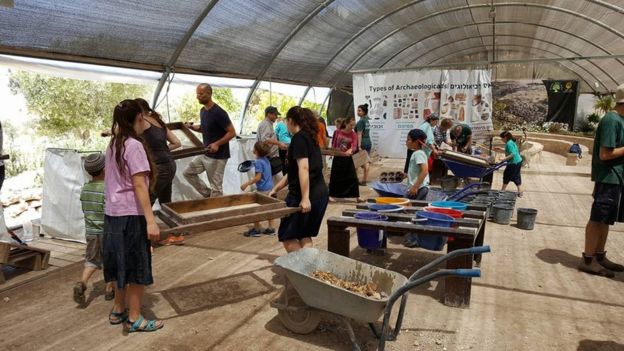Archaeologists in Jerusalem say they have for the first time reconstructed likely designs of a Biblical Jewish temple floor using original fragments.
Experts reassembled pieces of tiles found amid tons of earth from the site known to Jews as the Temple Mount and to Muslims as Haram al-Sharif.
They say the tiles date from the period of the Second Temple, during the time of King Herod about 2,000 years ago.
The temple was destroyed by the Romans in 70 AD during a Jewish rebellion.
Some 600 segments of coloured stone floor have been found since archaeologists began examining the debris from the hilltop site in 2004.
The plateau where the temples stood is the most sacred site in Judaism. It is joined by the Western Wall, venerated by Jews as part of the original supporting wall of the temple compound.
Haram al-Sharif (Noble Sanctuary) is also the place where the Koran says the Prophet Muhammad ascended to Heaven, and is the third holiest site in Islam.

The archaeologists say the tiles probably came from porticos in the temple’s courtyards.
Piecing the fragments together “enables us to get an idea of the Temple’s incredible splendour”, said Dr Gabriel Barkay of the Temple Mount Sifting Project.
Experts say they managed to assemble seven potential designs of how the flooring could have looked like. The type of flooring is known as opus sectile, Latin for “cut work”, and “considered to be far more prestigious than mosaic tiles floors”, according to Frankie Snyder, from the project’s team.
“The tile segments were perfectly inlaid such that one could not even insert a sharp blade between them,” she said.
The Temple Mount Sifting Project was established by Israeli archaeologists in 2004 to examine debris dumped by Islamic authorities following expansion work at an underground mosque on the compound.
The project attracts thousands of visitors each year who participate in finger-tip searches of the earth and has so far turned up hundreds of ancient relics, including coins, animal bones and pieces of pottery.